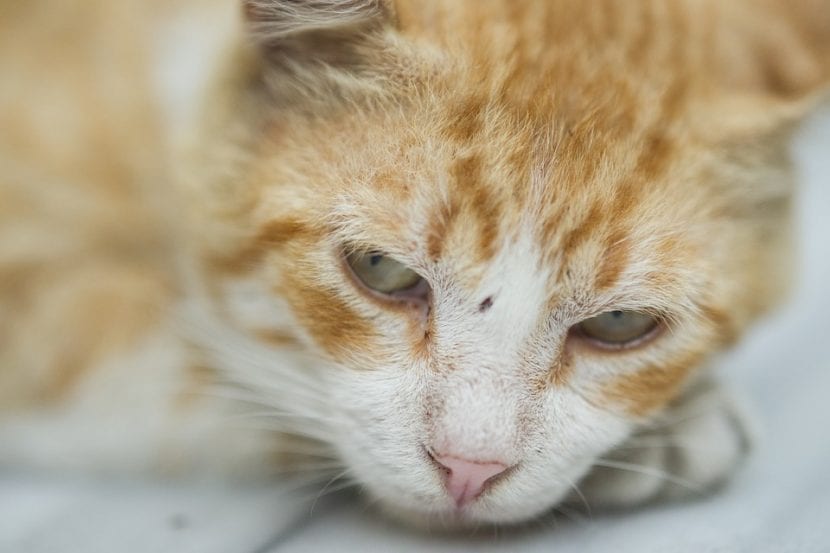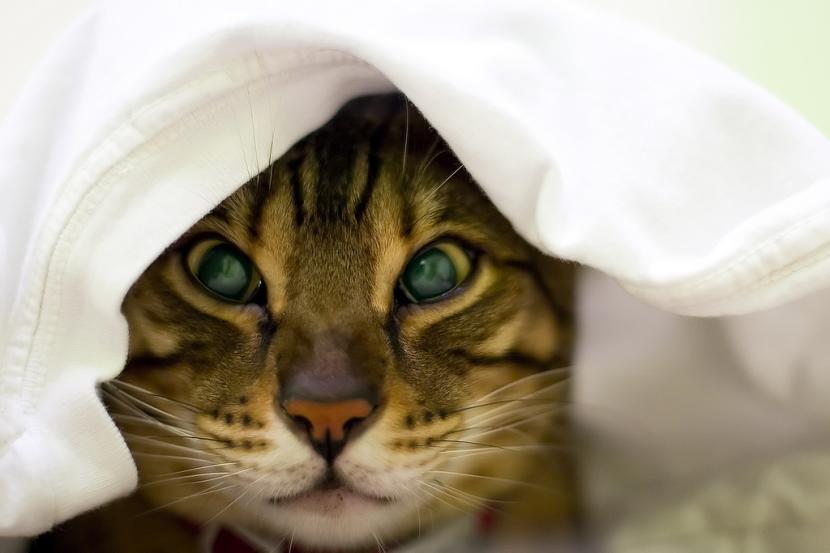
Unfortunately, the cat is an animal that does not escape from falling ill from time to time throughout its life. However, if you live with a human who takes care of you and takes you to the vet whenever you need it, you will not have to worry too much about the feline infectious anemia.
Anyway, it is important to know the characteristics of this disease because if you do not receive treatment we could run the risk of losing it.
What is it?

Feline infectious anemia (FIA), also known as hemobartolenosis, is a disease produced by the Haemobartonella Felis bacteria, which destroys the surface of the animal's red blood cells. These globules are responsible for oxygenating the body's tissues, hence they are vital for the cat (and in fact, for all animals including humans).
Four distinct stages are distinguished:
- Preparasitemic: lasts from 2 to 21 days. It will not show any symptoms.
- Acute phase: you will have symptoms.
- Recovery phase: in which you will have mild anemia and minor symptoms.
- Carrier phase: lasts up to 2 years. You will have no symptoms.
In addition, it can be primary, or secondary (appear as a consequence of another disease or because of having a weak immune system).
What are the symptoms?
Primary
The symptoms of primary feline infectious anemia are as follows: anemia, decay, jaundice, hypothermia, weakness, heart murmur, tachycardia, weight loss, not very high fever.
Middle School
It usually appears if the animal has FIV. The symptoms are: pancreatitis, tumors, gastroenteritis that does not heal, decay, severe anemia, weight loss, listlessness.
How is the cat spread?
It can be spread in two different ways: through flea and tick bites, and can also be passed from mothers to fetuses. Despite what it may seem, it does not pose any danger to humans, since it is a disease that solo affects cats. Still, I insist, it does not heal itself.
How is it produced?
Feline infectious anemia It is produced by two mechanisms:
- The bacteria bind to the surface of the red blood cell, causing direct damage by destroying the membrane that covers it.
- This alteration of the cell membrane causes some antigens (substances that activate the formation of antibodies, which are responsible for fighting and eliminating potentially dangerous microorganisms) on the surface to hide and others to appear.
How do you make the diagnostic?

If we suspect that the cat is sick, we have to take it to the vet as soon as possible. Once there, do a physical exam and blood test to perform the ELISA test used to detect antibodies. If the diagnosis is confirmed, he will proceed to put the treatment.
Which is the treatment?
Feline infectious anemia it is treated with antibiotics that will fight the bacteria and with corticosteroids which will make you have a bigger appetite and a stronger defense system. But it will also be very important to avoid stress and, in severe cases, give a blood transfusion.
Is the prognosis good?
Depends of the seriousness of the case. If it has been detected early and there are no underlying diseases (such as FIV) it is very, very good. In fact, although it may suffer episodes of recurrent anemia or become chronically ill, the cat will be able to lead a completely normal life. Otherwise, you could be in serious danger.
Which are the risk factors?
They are the following:
- Let the cat go outside and, above all, without neutering.
- Do not treat it against external parasites.
- Not getting the shots you need.
- You fight sick cats.
How do I know if my cat is sick?

We have talked about the symptoms of feline infectious anemia, but the reality is that the feline is an animal that hides its discomfort as much as it can until it is usually late. So when we take this into account, it's no wonder it's hard to tell what's wrong with it. For all this, it is very important to be attentive to any changes that occur in your routine, although apparently it does not matter.
To give you an idea of how necessary it is to observe the feline DAILY, I will tell you that one of my cats, Susty, always followed the same routine when she returned from a walk in the field: she would go in, eat and take a nap . One day, instead, he came in and lay down on the ground. She had never done it before, so I got worried and took her to the vet - she had gastroenteritis. He was in bed for a week.
It is true that gastroenteritis is not a disease that usually endangers the life of a cat (except if it is a puppy), but still I want you to understand that it depends on you whether your cat is healthy or not, and for how long.
In case of doubt, it will always be better to consult a professional until time passes ... because sometimes, there is simply no time to waste.